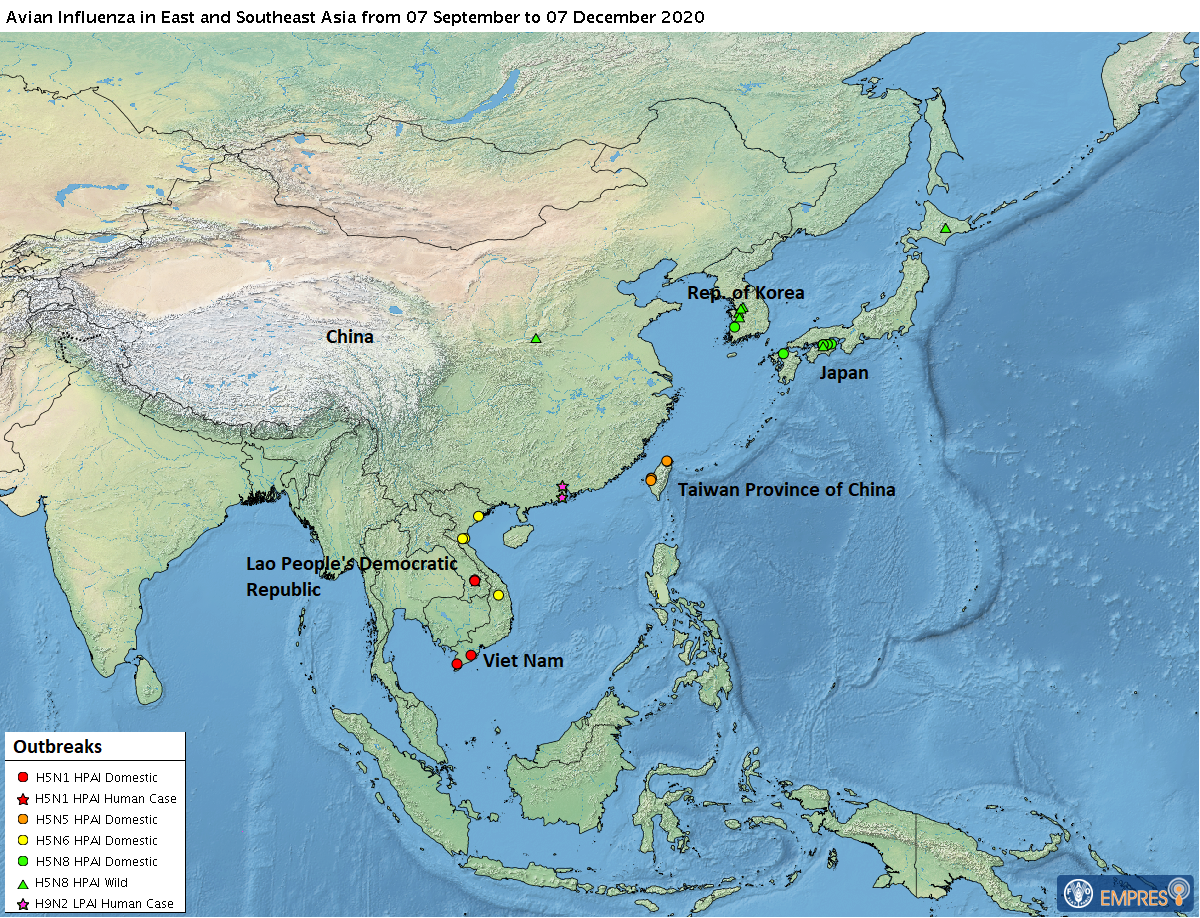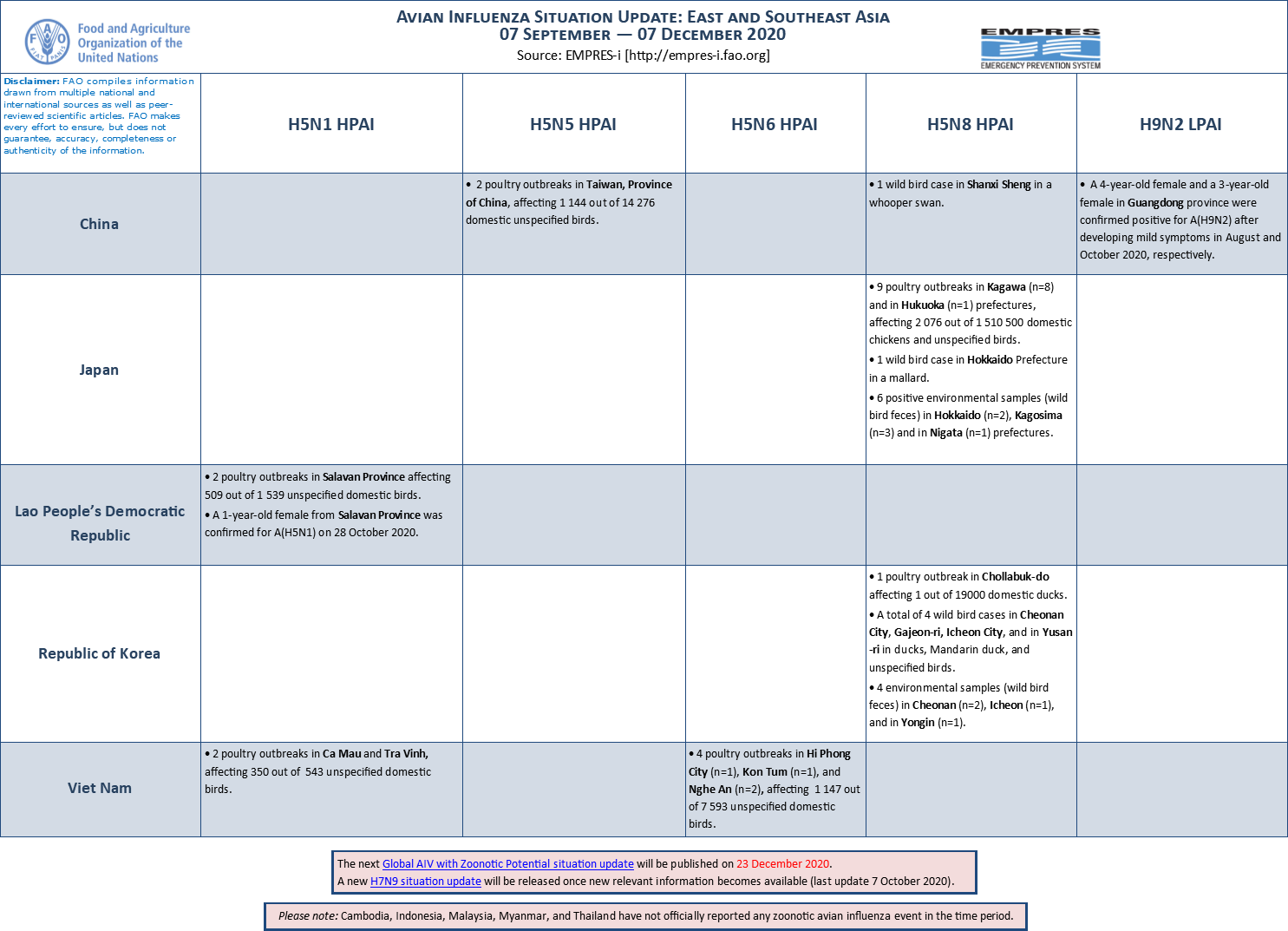FAO/EMPRES-AH is constantly monitoring the avian influenza situation worldwide and compiles information from multiple national and international sources as well as peer-reviewed scientific articles. Close collaboration with country and regional offices, the implementation of avian influenza field surveillance projects, and networks of expertise like OIE/FAO’s OFFLU (www.offlu.net) provide access to timely information on outbreaks, surveillance findings, and genetic similarities of circulating viruses or their virological features. This information is stored in the EMPRES Global Animal Disease Information System (EMPRES-i), a database that can be accessed online at empres-i.fao.org.

Avian Influenza in East and Southeast Asia from 7 September to 7 December 2020 ©EMPRES-i
During the period 7 September to 7 December 2020, four highly pathogenic avian influenza (HPAI) virus subtypes and H9N2 low pathogenic avian influenza (LPAI) have been reported in East and South-East Asia. Two H5N1 HPAI outbreaks were reported in smallholder farms in Ca Mau and Tra Vinh provinces in Viet Nam, affecting a total of 350 out 543 unspecified domestic birds. Lao People’s Democratic Republic also reported two H5N1 HPAI outbreaks in Saravan Province, affecting 509 out of 1 539 unspecified domestic birds. In addition, H5N6 HPAI caused four poultry outbreaks in Northern and Central Viet Nam, affecting a total of 1 147 unspecified domestic birds. In Taiwan, Province of China, H5N5 HPAI virus continues to circulate endemically and caused two poultry outbreaks affecting 1 144 out of 14 276 unspecified domestic birds.
H5N8 HPAI has recently flared up in Western and Central Eurasia and was recently introduced to China, Japan, and the Republic of Korea. Epidemiological and ecological observations indicate that these multiple virus incursions are due to wild bird movements along the different migratory flyways. In late October, active surveillance conducted in Japan and the Republic of Korea early detected H5N8 HPAI virus in wild bird faeces. Since November 2020, a wild bird case was detected in Shanxi Province, China and in Hokkaido Prefecture, Japan, and four wild bird cases were reported by the Republic of Korea. H5N8 HPAI also spread to poultry farms in Japan with nine outbreaks affecting chickens and other unspecified domestic birds, and in the Republic of Korea causing one outbreak in a domestic duck farm. The H5N8 HPAI virus detected in East Asia shares high genetic similarities with the one that was circulating in Europe during the first half of 2020.
In addition, one A(H5N1) human case was reported in Salavan Province, Lao People’s Democratic Republic, and two A(H9N2) human cases in Guangdong Province, China, all occurring in young age children that had exposure to live domestic poultry. Highly pathogenic H5N1, H5N5, H5N6, and H5N8 viruses have demonstrated the ability to spread via migratory water birds. We consider avian influenza activity to be highest in the period from December to March, therefore reports of outbreaks in poultry or detections in wild birds and humans are expected to increase over the coming months in the region.

AI situation update ©EMPRES-i




